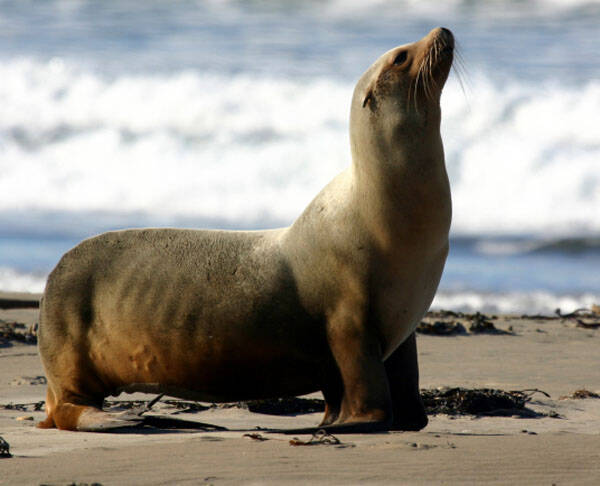Zalophus californianus
IUCN
LCBasic Information
Scientific classification
- name:Zalophus californianus
- Scientific Name:Zalophus californianus,Californian Sea Lion
- Outline:Carnivora
- Family:S.L.family
Vital signs
- length:1.8-2.1m
- Weight:100-350kg
- lifetime:15-24years
Feature
Males have an enlarged mane around their necks, usually with white fur on top and dark brown on the back.
Distribution and Habitat
Sea lion colonies breed on sandy beaches and rocky areas of remote islands, where there is easy access to shade, cold water and plenty of food. They often gather on man-made structures such as piers and docks. Some California sea lions can also live in freshwater basins, such as the Bonneville Dam near the Columbia River. Outside Pier 39 (Fisherman's Wharf) in San Francisco, California, people can often see a number of California sea lions sunbathing up close.
Appearance
California sea lions vary greatly in appearance, with males being much larger than females. They are 1.8-2.1 meters long and weigh about 100-350 kilograms. The skull is 330 millimeters long and convex, with a straight upper profile. The concha is small; the snout is rounded. Male sea lions use their front limbs as paddles to propel themselves forward, while their hind limbs are passively dragged behind them. They have an exceptionally good sense of smell and hearing.
Adult males have an enlarged mane on their necks, usually with white fur on top, dark brown on the back, and lighter coloration on the belly and sides, while females can appear more tan. Pups are born with a dark brown coat that changes to a brown coat after a month. This coat sheds after four to five months and grows into the fur of the beast. California sea lions found in Mexico appear to be smaller than those found in California.
Details
Californian Sea Lion (scientific name: Zalophus californianus), foreign name California Sea Lion, no subspecies.

The Japanese sea lion (Zalophus japonicus) and the Galapagos sea lion (Zalophus japonica) were once subspecies of the California sea lion, but were classified as separate species in 2007.
The California sea lion is a highly social species and one of the largest groups of marine mammals. They move in groups, usually in small groups, but will gather in large groups when there is a lot of food. They spend the day in the sea and sleep on the shore at night. Diving usually lasts about two minutes, but can last up to ten minutes. The average depth is 26-98 meters, and the deepest dive is 200 meters. They have particularly good hearing and smell. They usually fish in the open waters of the Pacific coast. After being tamed, they can be used for performances or military purposes.
California sea lions mainly feed on various aquatic animals, such as northern shad, Pacific cod, and mackerel. They also eat seafood such as cephalopod squid and occasionally prey on seabirds. The average lifespan is 15 to 24 years old, and they reach sexual maturity at 4-5 years old.

The breeding season for California sea lions begins in May, when adult males begin to fight for territory, during which fights occur. Most males are unsuccessful and retreat to the seashore or nearby single sea lion beaches. Successful male sea lions guard their territory and maintain boundaries, barking frequently to show their masculinity. Males can occupy their territory for up to 45 days, depending on other male competitors and fat reserves. Females give birth to a pup in May-June and are ready to mate again 28 days after giving birth. This interval is larger in the Mexican population. Females spend the first week after birth with their pups, then begin nursing and nursing, alternating between 2-3 days at sea and 1-2 days on land, until the pups are weaned, a period of about 10-12 months. Mothers and pups recognize each other by sound and smell after separation.
The breeding season ends in August, after which most males migrate north, and females and pups disperse but stay close to the islands where they breed. The average lifespan is 15 to 24 years, reaching sexual maturity at 4-5 years. Males generally do not hold territories until they are older.
The main survival issues facing California sea lions are entanglement in fishing nets, marine debris and mortality caused by poaching. During the El Niño phenomenon, the amount of food available for hunting is greatly reduced, and a large number of pups born during these periods die of starvation, and animals of all ages are also weaker.
Listed in the 2015 IUCN Red List of Threatened Species ver 3.1 - Least Concern (LC).
Protect wildlife and eliminate bushmeat.
Maintaining ecological balance is everyone's responsibility!








